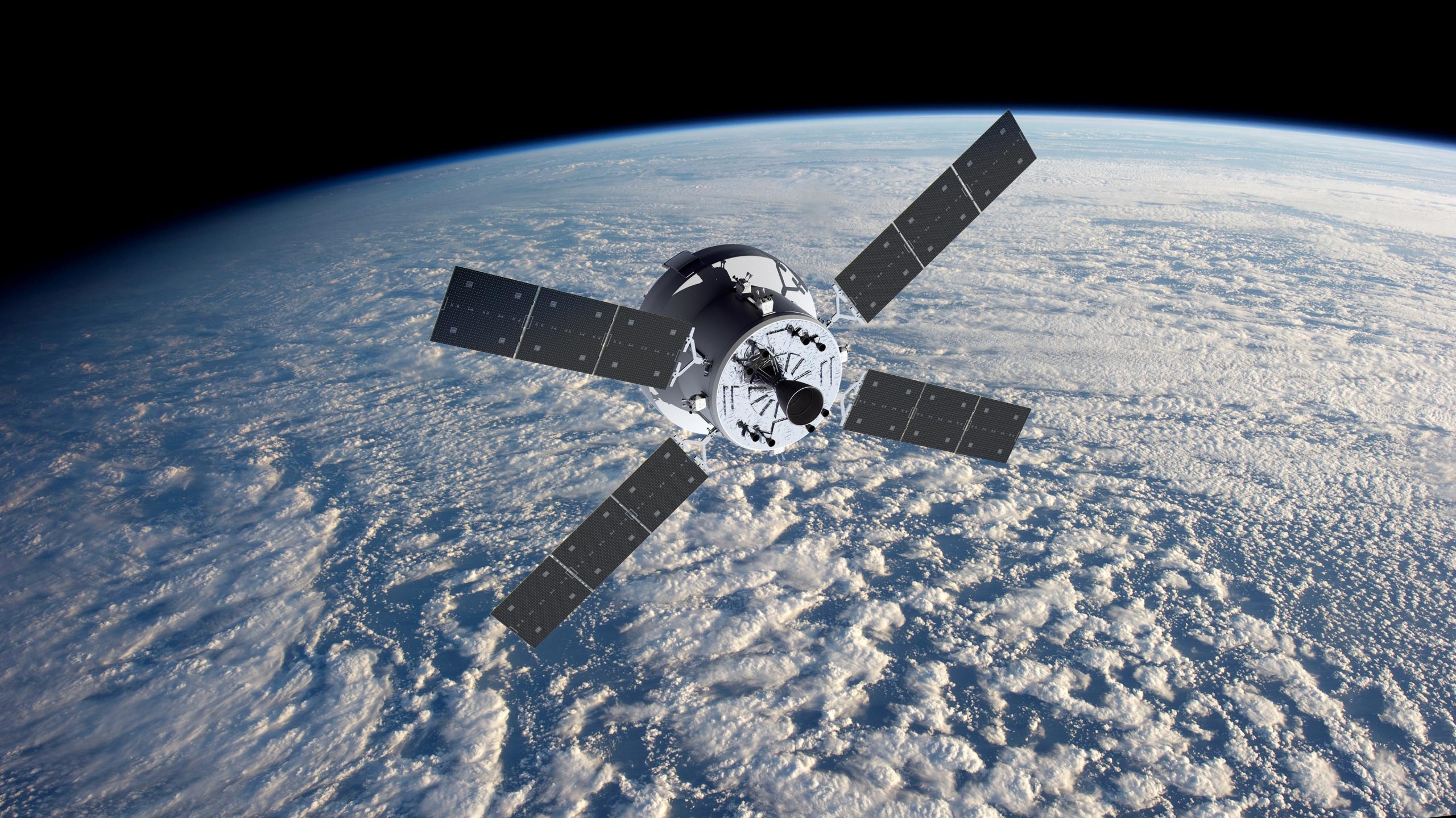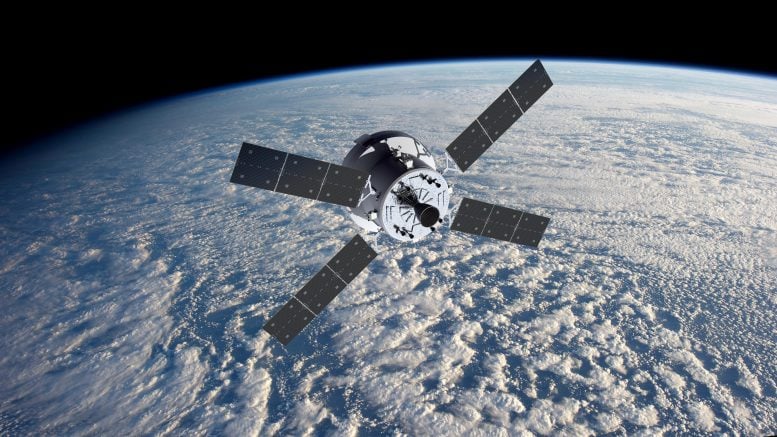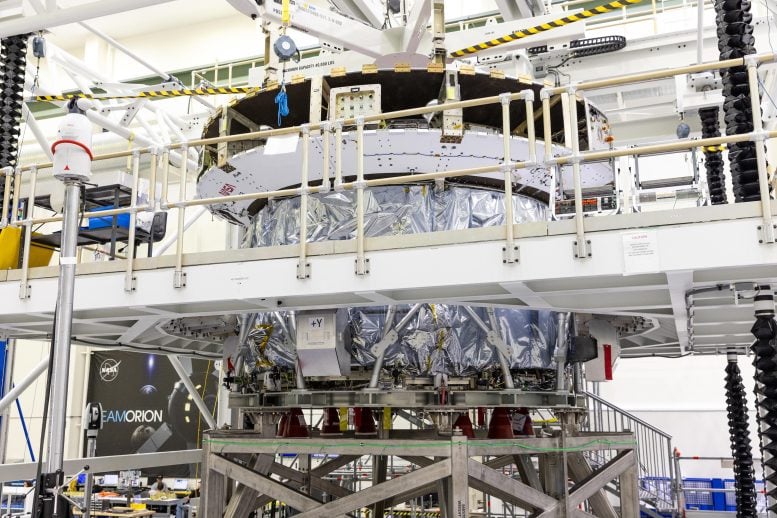

The assembly of NASA’s Orion spacecraft for the Artemis III mission has progressed with the integration of the European Service Module and crew module adapter at Kennedy Space Center.
This module, crucial for deep space exploration, provides propulsion, thermal control, and life-support systems. It was constructed from parts sourced from across Europe and the U.S. and is set for final inspections and subsequent welding. This milestone marks a significant step in the Artemis campaign, aiming to advance human exploration of the Moon.
Engineering teams have joined the Artemis III European Service Module and crew module adapter for NASA’s Orion spacecraft inside the Neil A. Armstrong Operations and Checkout (O&C) Building at NASA’s Kennedy Space Center in Florida, following the completion of the Integration Readiness Review on September 17.
Role of the European Service Module
The ESA (European Space Agency)-provided European Service Module is assembled by Airbus in Bremen, Germany, from parts made in 10 European countries and the United States. It acts as the driving force behind the Orion spacecraft for deep space exploration, providing essential propulsion, thermal control, and electrical power. The module also will supply astronauts with vital resources like water and oxygen, ensuring they’re well-supported during their journey to the Moon.

Integration and Testing at Kennedy Space Center
The crew module adapter bridges electrical, data, and fluid systems between Orion’s crew and service modules with an umbilical connector, and it also houses electronic equipment for communications, power, and control.
The integrated European Service Module and crew module adapter, which together make the service module, will undergo final inspections before engineers move it to the clean room inside the spaceport’s O&C high bay for welding operations. Later in the production flow, the Artemis III crew module will be connected to the service module via the crew module adapter.
The European Service Module is managed by the Orion team at NASA’s Glenn Research Center in Cleveland, Ohio. The arrival of the Artemis III hardware to Kennedy marks the first time two Orion service modules have been inside the O&C facility at the same time during the agency’s Artemis campaign. The Artemis II service module is already mated to the crew module, and engineers continue to process the integrated modules inside the facility ahead of the test flight.